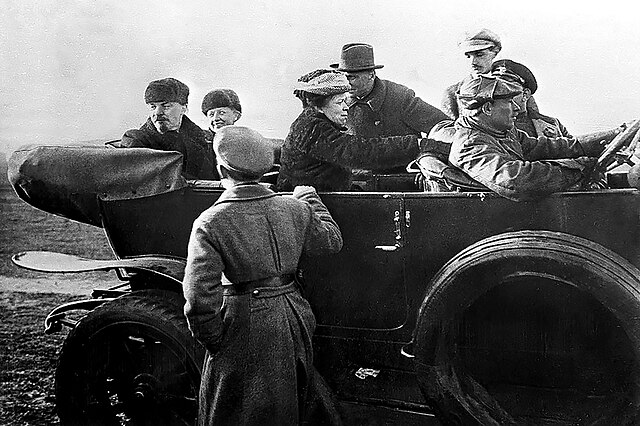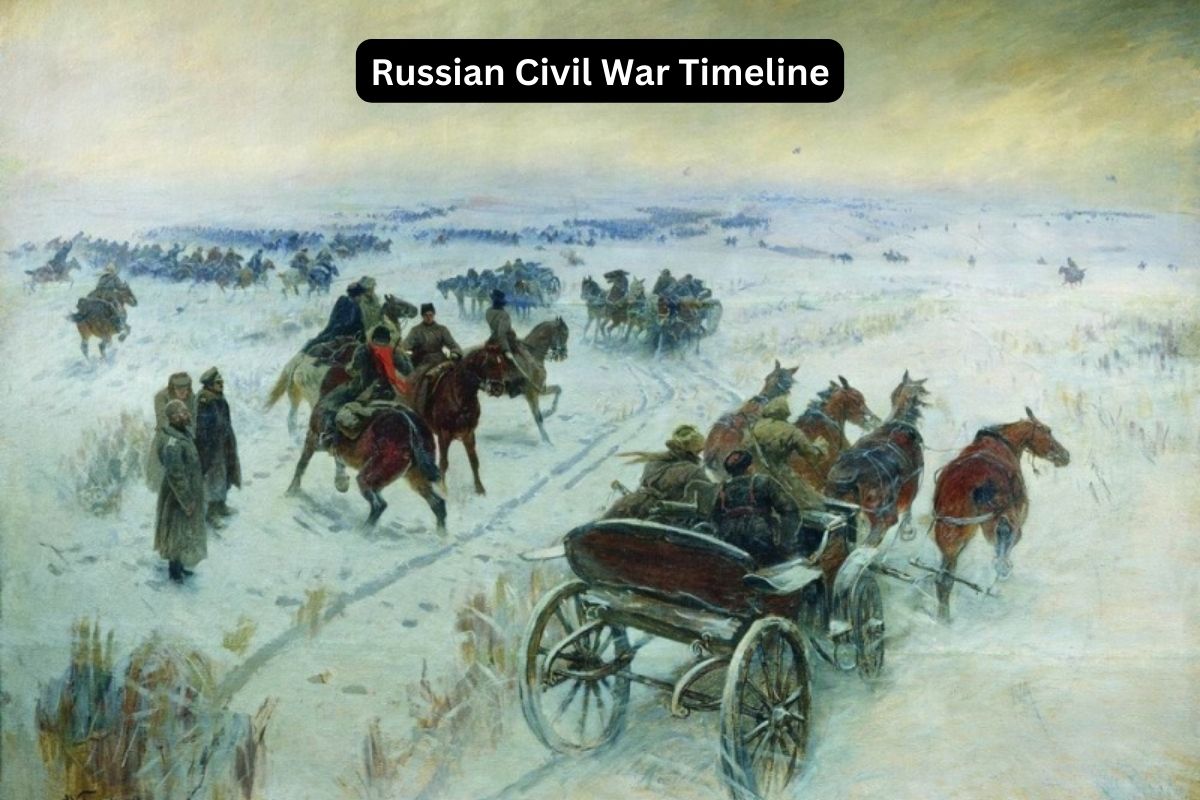The Russian Civil War, spanning from 1917 to 1922, remains a significant chapter in history, marked by the clash between Bolshevik revolutionaries and various opposition factions. This article provides a brief yet insightful overview of this turbulent period.
Beginning with the upheaval of the February and October Revolutions of 1917, where the Tsarist regime was overthrown and the Bolsheviks rose to power under Lenin’s leadership, the conflict quickly escalated. The Bolsheviks faced resistance from diverse groups, known collectively as the Whites, who opposed their socialist agenda.
The article explores the complex dynamics of the Civil War, including foreign intervention by powers such as Britain, France, and the United States. Amid shifting alliances and brutal campaigns, the conflict inflicted widespread devastation and suffering on the Russian population.
Despite numerous challenges, including internal dissent and economic turmoil, the Bolsheviks ultimately triumphed, establishing the Soviet Union. However, the legacy of the Civil War endured, shaping Russian society and politics for decades to come.
| Year | Events |
|---|---|
| 1917, February | The February Revolution begins in Petrograd (St. Petersburg) with strikes and protests against food shortages and war casualties. Tsar Nicholas II abdicates, leading to the establishment of a provisional government. |
| 1917, October | The Bolsheviks, led by Vladimir Lenin, seize power in Petrograd during the October Revolution, overthrowing the provisional government. This event marks the beginning of Bolshevik rule. |
| 1917, November | The Bolsheviks sign the Treaty of Brest-Litovsk with Germany, ending Russia’s involvement in World War I but ceding significant territories. |
| 1918, January | The Constituent Assembly, elected in November 1917, is dissolved by the Bolsheviks after it fails to give them a majority. |
| 1918, March | The Treaty of Brest-Litovsk is ratified, leading to widespread discontent among various groups, including anti-Bolshevik forces. |
| 1918, Summer | The anti-Bolshevik White movement begins to organize and coordinate resistance against the Bolsheviks. |
| 1918, August | Allied forces, including British, French, American, Japanese, and Czechoslovak troops, intervene in the Russian Civil War to support the Whites and to prevent the spread of Bolshevik ideology. |
| 1918 September | The Bolshevik government relocates the capital from Petrograd to Moscow due to its vulnerability to White and Allied forces. |
| 1919 | The Civil War intensifies, with major battles occurring throughout Russia. The Whites, despite receiving significant support from foreign powers, struggle to establish effective coordination and governance. |
| 1920 | The Red Army, under the leadership of Trotsky and other Bolshevik commanders, gains the upper hand in the Civil War. The Whites suffer significant defeats, and many foreign interventionist forces withdraw from Russia. |
| 1921 | The Red Army achieves final victory over the White forces. The Bolsheviks solidify their control over Russia, although pockets of resistance persist in some regions. |
| 1922 | The Russian Civil War officially ends with the Treaty of Riga, which recognizes Soviet control over Ukraine, Belarus, and the Baltic states. The Soviet Union is formally established later in the year, comprising Russia and several other republics. |
Timeline of the Russian Civil War
1918
January: The Constituent Assembly, convened in Petrograd, is dissolved by the Bolsheviks after a single day of session. This dissolution marks a turning point in Bolshevik consolidation of power, as they establish one-party rule under the leadership of Vladimir Lenin.
Also Read: Facts About the Russian Civil War
March: The Treaty of Brest-Litovsk, ratified by the Bolshevik government, officially ends Russia’s involvement in World War I. The treaty results in significant territorial losses, including Ukraine, Belarus, and the Baltic states. However, it allows the Bolsheviks to focus on consolidating power domestically.
Summer: The anti-Bolshevik White movement begins to gain momentum, organizing resistance against the Bolshevik government. The White movement comprises a diverse coalition of forces, including monarchists, conservatives, liberals, nationalists, and foreign interventionists, united in their opposition to Bolshevik ideology and rule.

August: Allied intervention in the Russian Civil War escalates, with British, French, American, Japanese, and Czechoslovak troops intervening on behalf of the anti-Bolshevik Whites. The Allies aim to prevent the spread of Bolshevik influence and protect their own strategic interests in Russia.
September: Faced with increasing pressure from White and Allied forces, the Bolshevik government relocates the capital from Petrograd to Moscow. The move is aimed at consolidating the Bolsheviks’ hold on power and securing the administrative heart of Soviet Russia.
1919
The Russian Civil War reaches its peak intensity as both the Red Army and the White forces, along with various other factions, engage in fierce battles across Russia.
The conflict becomes increasingly brutal and chaotic, with atrocities committed by both sides against civilian populations. Cities and regions change hands multiple times, exacerbating the devastation and suffering endured by the Russian people.
Also Read: Vladimir Lenin Facts
Despite receiving significant support from foreign powers, including military equipment, supplies, and advisors, the White movement struggles to overcome internal divisions and establish effective governance.
The coalition of White forces comprises a diverse array of factions, including monarchists, conservatives, liberals, nationalists, and foreign interventionists, each with their own agendas and priorities. These internal divisions hamper the Whites’ ability to present a unified front against the Bolsheviks and exploit their numerical and organizational advantages.
The Bolsheviks, under the leadership of Vladimir Lenin and Leon Trotsky, consolidate their control over Russia and the newly formed Soviet state. They implement harsh measures to suppress opposition, including political dissent, counter-revolutionary activities, and peasant uprisings.
The Red Army, bolstered by revolutionary zeal and a centralized command structure, gradually gains the upper hand in the conflict.

1920
The Red Army, led by Trotsky and other Bolshevik commanders, achieves significant victories against the White forces and other opposition groups. The Whites suffer major defeats on multiple fronts, leading to the collapse of many White-controlled territories.
Foreign interventionist forces, facing logistical challenges and public opposition at home, begin to withdraw from Russia, further weakening the anti-Bolshevik cause.
Despite their military setbacks, some White forces continue to resist Bolshevik rule in isolated pockets of resistance. However, without external support and facing overwhelming odds, their resistance becomes increasingly futile.
Many White leaders flee Russia, seeking refuge in exile abroad, while others are captured or executed by the victorious Bolsheviks.

1921
The Red Army achieves final victory over the remaining White forces, effectively ending the Russian Civil War. The Bolsheviks consolidate their control over Russia and establish the Soviet Union as a socialist state.
However, the aftermath of the Civil War leaves the country devastated, with widespread destruction, economic collapse, and social dislocation.
The Bolshevik government faces numerous challenges in the post-war period, including famine, disease, and political dissent. In response, they implement policies such as War Communism and the New Economic Policy (NEP) to stabilize the economy and consolidate their power.
The NEP allows for limited free market activities, providing some relief to the war-weary population and facilitating the reconstruction efforts.
1922
The Russian Civil War officially ends with the signing of the Treaty of Riga, which recognizes Soviet control over Ukraine, Belarus, and the Baltic states.
The Soviet Union is formally established as a federation of socialist republics, comprising Russia and several other constituent republics.
The Bolsheviks, having emerged victorious from the Civil War, solidify their hold on power and begin the process of building a new socialist society.
